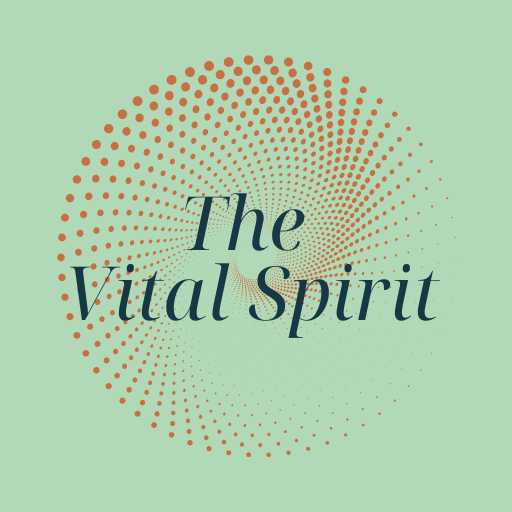"Everything that we see is a shadow cast by that which we do not see."
~ Martin Luther King, Jr. on America's shadow
In recent weeks, American media outlets have been analyzing the hows and whys of this presidential election cycle. Many pundits have drawn conclusions based primarily on their personal biases. The implications and meaning of these election results will undoubtedly be debated for years to come.
Now and in the months ahead, I will examine the election results through an energetic and spiritual lens. My intention is to encourage people to seek answers within themselves and their communities. By doing so, I hope to offer not only a deeper understanding but also a pathway toward personal growth and collective healing.
America's Shadow is Systemic Racism
The first aspect of this election I want to explore is the shadow of this election; racism. Few are comfortable admitting that their endorsement of Trump is because they are racist.
However, it is difficult to ignore that Trump has been vocal about his opinions of brown and Black people. He has a long history of racist behavior both in business (refusing to rent his properties to Black people in the ’70s) and personally (taking out a full-page ad in The New York Times in 1989 accusing 5 innocent Black and brown teenagers of a violent rape in Central Park) and he was running against a woman of Black and South Asian descent.
Whether or not you believe that racism played a part in this election, I hope you will allow me to explore systemic racism and how it operates in the United States. I will explain how shadows affect people’s behavior and allow racism to operate unseen by its perpetrators.
While following the 2020 Black Lives Matter protests in Portland, Oregon, I encountered an article examining how characteristics of white supremacism manifest in organizational structures—what we commonly call systemic racism. Here is the list of characteristics (there is a link to the article at the bottom of this blog):
- Perfectionism
- Sense of Urgency
- Defensiveness
- Quantity over Quality
- Worship of the Written Word
- Paternalism – decision-making is clear to those with power and unclear to those without it
- Either/Or Thinking
- Power Hoarding
- Fear of Open Conflict
- Individualism – people in organization believe they are responsible for solving problems alone
- Progress is Bigger, More
- Objectivity – the belief that emotions are inherently destructive, irrational, and should not play a role in decision-making or group process
- Right to Comfort – the belief that those with power have a right to emotional and psychological comfort
Let me begin with an acknowledgment that there are some corporations and organizations that do better in some areas of this list than others and maybe even a few that have worked hard to overcome these expectations. Still, I think it is safe to say that our large organizational structures in the United States are built upon this framework.
When I read this list of characteristics the first thought I had was ” if we applied these to a person, these are the characteristics of a narcissist.” Or perhaps, this is the framework that births narcissists and narcissistic/sociopathic behavior.
How Shadows Operates in Culture
The author of the article describes the use of the characteristics of white supremacism in organizational culture this way:
Culture is powerful precisely because it is so present and at the same time so very difficult to name or identify. The characteristics listed below are damaging because they are used as norms and standards without being pro-actively named or chosen by the group. They are damaging because they promote white supremacy thinking. They are damaging to both people of color and to white people.
THE CHARACTERISTICS OF WHITE SUPREMACY CULTURE, From Dismantling Racism: A Workbook for Social Change Groups, by Kenneth Jones and Tema Okun, ChangeWork, 2001
Of particular relevance is the observation that these characteristics become harmful when they operate as unspoken norms and standards—adopted without explicit acknowledgment or group consensus. In the personal development field, this phenomenon is known as the shadow.
While we unconsciously conform to these shadow characteristics in workplaces and other organizational settings, we often struggle to discuss them directly. This difficulty arises because shadow elements operate below our conscious awareness and frequently contradict our explicit beliefs about ourselves and our institutions.
The harm the shadow inflicts on people is twofold: wounds to the psyche that aren’t seen or acknowledged even by the shadow’s victims, and the injuries of prejudice when a person’s failure to comply with the unspoken rules results in a lack of advancement or being fired.
The Wounds America's Shadow Inflicts
For this blog, we will refer to these wounds as the inner and the outer wounds.
Inner wounds are those wounds that live in the unconscious. They direct behavior from a purely unconscious level. We are unaware when an inner wound is activated but the response will be behaviors that seek to either conform to those unstated norms, deflect attention from, or defend how we don’t conform.
Outer wounds are those injuries that we are aware we are dealing with. For example; the disappointment of consistently being overlooked for promotion or being too emotional in the workplace. These outer wounds might be reasons someone would seek out a mentor, coach, or therapist.
How do the Outer and Inner Work Together?
Inner work is also known as Shadow work in the realm of personal development. Shadow work is the process of seeking to reveal and integrate any tendencies, traits, or beliefs that were programmed into our unconscious through the process of growing up or living our lives. We learned these unspoken tendencies and beliefs from our parents, friends, schools, and jobs.
For years, I’ve worked to heal these characteristics within myself, addressing both their external manifestations and internal wounds. Reading this article marked the first time I recognized them as expressions of white supremacism. Previously, I had attributed these traits to general societal conditioning, but language matters—and it’s crucial not to indict society as a whole. Rather, it’s specifically the toxic legacy of white supremacism that inflicts these wounds.
White supremacism harms all of us, white, Black, Hispanic, Asian, male, female, etc. Working with empaths to heal these same wounds is why I started this business. The real wound is always “not fitting in” to the culture of our society. Every wound leads back to this one. And each of us has experience with this wound though it may be hidden in the shadow.
The America's Shadow's Double Bind
People who recognize their wounds from this system and seek help in healing—particularly from their perceived failures to meet impossible standards of perfection—may view themselves as weak. The very act of seeking help can trigger shame, revealing another insidious layer of white supremacy’s damage.
Through healing and therapy, they discover that seeking help isn’t weakness at all. In fact, within a culture that demands perfection, reaching out for support becomes an act of courage—a direct challenge to the system itself.
Yet these same individuals may later judge others as weak for seeking therapy, manifesting their own inner wound of white supremacy. This reveals a cruel paradox of living within a shadow culture: we risk becoming unconscious perpetrators of the very stigma that once harmed us.
This struggle exemplifies cognitive dissonance—the mental discomfort of holding contradictory beliefs or when our actions misalign with our values. Like trying to force together mismatched puzzle pieces, our minds resist this discomfort by suppressing beliefs that challenge the cultural framework, avoiding a crisis of conformity.
The framework of white supremacy, embedded in our collective unconscious, is stubborn. It requires vigilance and emotional honesty to recognize and integrate into conscious awareness. This complex interplay between inner and outer wounds makes progress painfully slow, yet inevitable with sustained effort.
Achieving America's Promise
To fully realize America’s promise—that all people are created equal under the law—we must confront and integrate the shadow of white supremacy in order to heal the outer wound of systemic racism.
Self-awareness of our thoughts, beliefs, and attitudes fosters personal honesty and community accountability. This work is a marathon, not a sprint, and we must pace ourselves accordingly. By doing our individual shadow work around white supremacy, we contribute to disrupting systemic racism and help build new organizational systems founded on ethical principles and moral truths.
Aligning our external actions with our inner values forms the foundation of authentic living—what Brené Brown calls ‘Wholehearted Living.’
Consider This...
One way you can make a difference and support the call for change in our country is to purchase from Black owned businesses. This helps by shifting economic power from big businesses like Amazon and Target and gives those dollars to small business owners who are also Black. Check out the list of Black owned business in the US and Canada.
FOOTNOTE
THE CHARACTERISTICS OF WHITE SUPREMACY CULTURE, From Dismantling Racism: A Workbook for Social Change Groups, by Kenneth Jones and Tema Okun, ChangeWork, 2001




